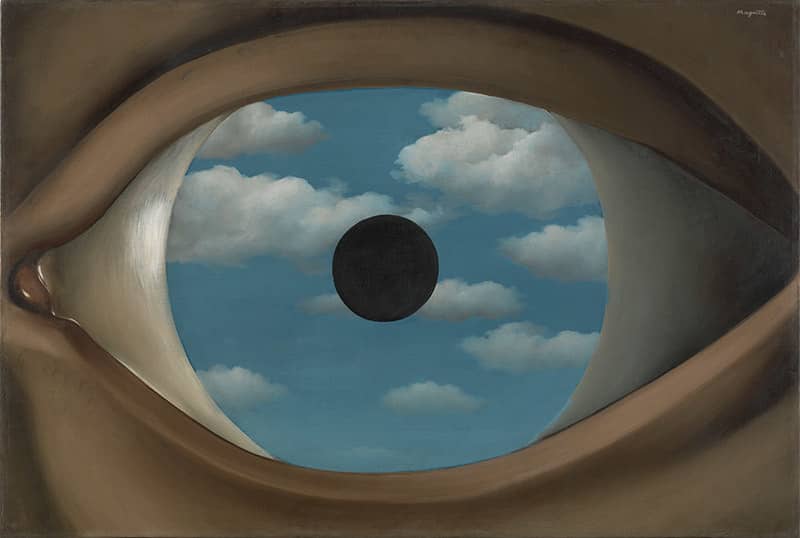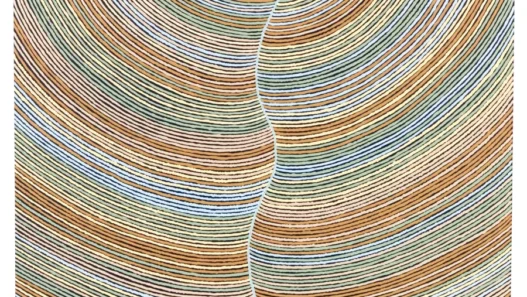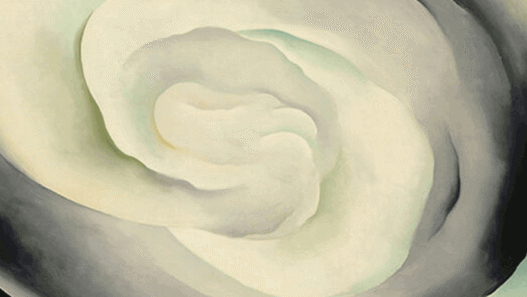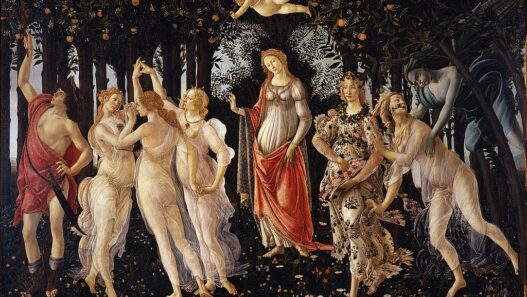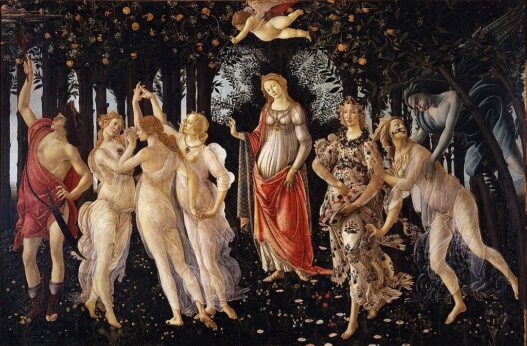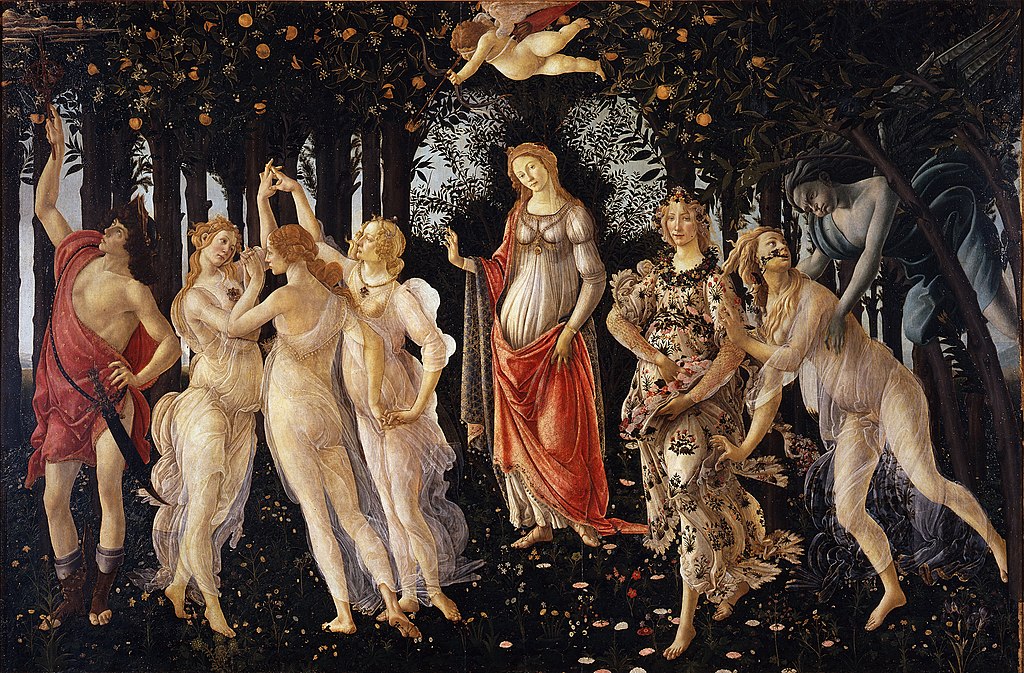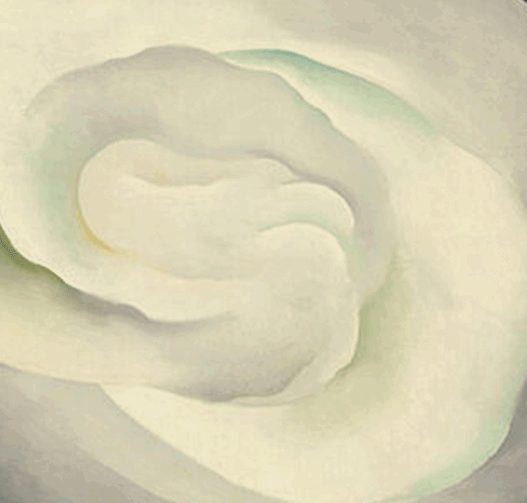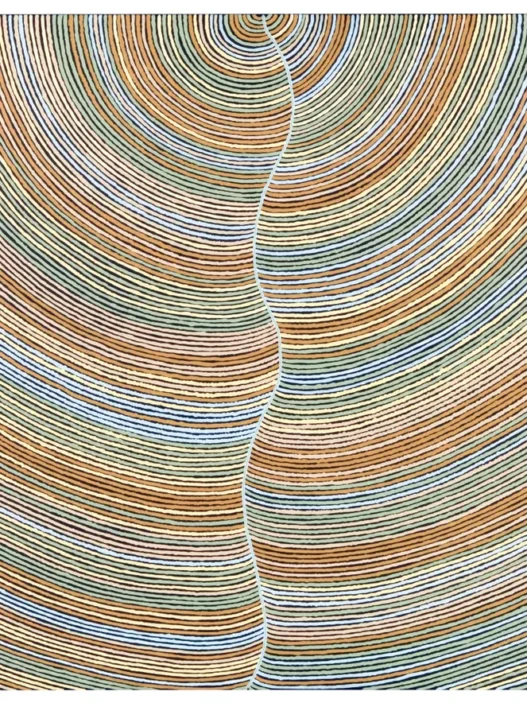When you first see Sandro Botticelli’s Primavera (c. 1482), it feels like stepping into a symbolic dream, a quiet grove where myth and nature breathe together.
Nine figures move among blossoming orange trees, their gestures suspended in a choreography of grace. But beneath the calm beauty of the scene lies an intricate web of symbols, mythology, and philosophy, weaving love, rebirth, and transformation into one eternal spring.
A Garden of Myth and Meaning
ainted for the Medici family, the great patrons of Renaissance Florence, Primavera (“Spring”) is not just a celebration of nature’s renewal. It’s also a visual poem about the harmony between the earthly and the divine, drawn from classical mythology and humanist thought.
At the center stands Venus, the goddess of love, presiding over her sacred garden. Behind her, an arch of leaves forms a natural halo, transforming her into both pagan goddess and Christian Madonna, a bridge between spiritual love and sensual beauty. Botticelli’s Venus is not the seductive Venus of the sea; she is gentler, wiser, embodying amor humanus; the refined, rational love that elevates the soul.
Botticelli’s Dance of Desire
To the right, Zephyr, the blue wind of spring, rushes in and grasps Chloris, a nymph startled by his touch. From her mouth bloom flowers, she transforms into Flora, the goddess of blossoms, who stands beside them scattering petals across the grass.
Their sequence is symbolic: desire leads to transformation, and transformation to fertility. Botticelli paints the cycle of love as both physical and spiritual rebirth. The myth, drawn from Ovid’s Fasti, tells of how violence is turned into beauty, how even passion can blossom into creation.
The Three Graces Symbolism
On the left, three luminous figures.
The Three Graces, dance in a delicate circle. They are the daughters of Zeus, embodying beauty, chastity, and pleasure, the virtues that sustain love in its purest form. Their transparent gowns and intertwined hands create a rhythm of harmony, as if love itself were a melody moving through them.
Above them hovers Mercury, god of reason, gently dispersing the clouds with his caduceus. His presence suggests that intellect and spirit guide desire, ensuring balance between body and soul, a key Renaissance ideal.
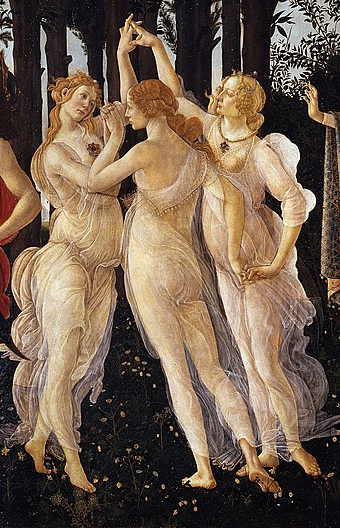
The Language of Flowers
The meadow beneath their feet bursts with more than 500 identifiable plant species, all rendered with botanical precision. Every bloom carries meaning:
Myrtle and roses: sacred to Venus, symbolize love.
Violets: humility.
Iris and periwinkle: faith and eternity.
Together they form nature’s hymn to fertility, renewal, and beauty.
Learn more about Botticelli’s Primavera and its rich symbolism on the Uffizi Gallery website and explore detailed analyses of the mythological figures.
Love as Cosmic Order
At its heart, Primavera is not just a painting about mythological figures. It’s a map of love’s universe, where passion, reason, and virtue form the seasons of human life.
From Zephyr’s breath to Flora’s flowering, Botticelli paints love as both a natural force and a divine principle, unpredictable yet ordered, sensual yet sacred. The garden is more than a setting; it is a symbol of harmony, where every emotion finds its rightful place.
Even today, centuries later, Primavera feels alive, a living allegory of how beauty can transform chaos, and how love, when balanced by wisdom, renews the world.
Primavera is a celebration of spring; it is spring forever.
Unfolding, forever fertile. Botticelli gives us not a frozen moment, but an eternal rhythm: desire becoming creation, beauty becoming wisdom, and nature becoming art.
